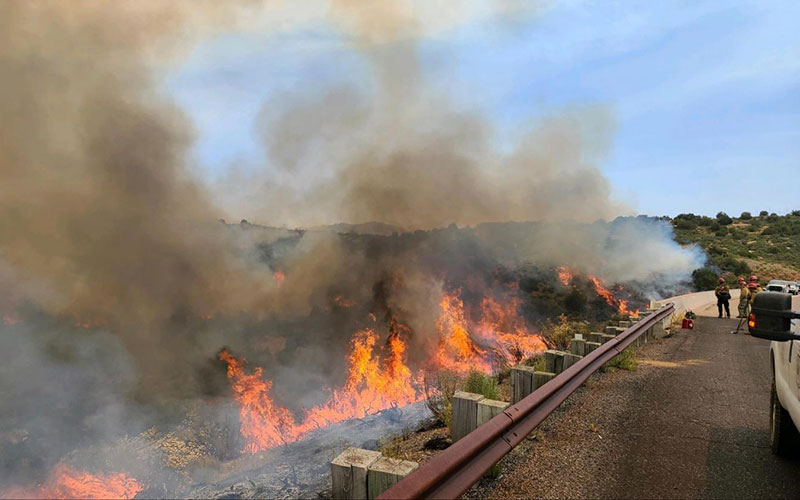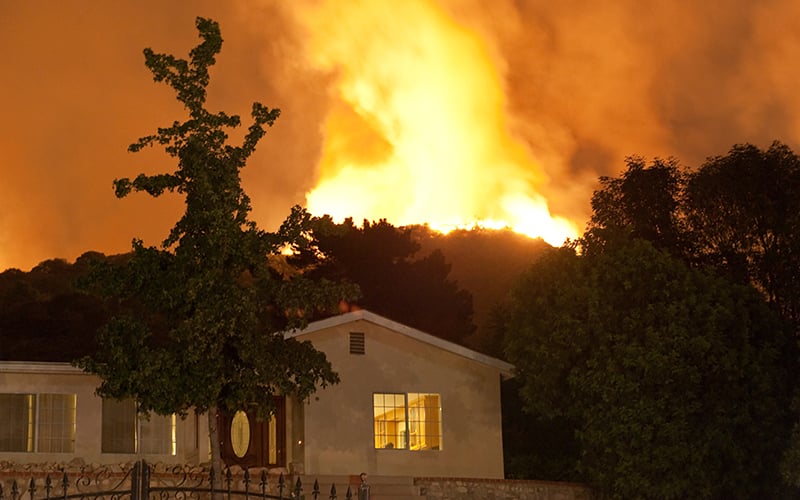Every summer, Arizona braces for fire season, and this summer was no exception. Thousands of acres burned and several communities were evacuated.
Conservationists say it’s important for Arizona communities to learn how to live with fire, to thin fuel in and around their communities. Many communities understand that, and politicians are beginning to be aware of the problem, but a number of challenges remain.
In 2019, the Arizona Department of Forestry and Fire Management did a wildfire risk assessment of more than 500 communities.
It found that about 42% of them were at high risk for wildfire. About 44% were at moderate risk.
As more people move to Arizona, some of them build homes next to flammable landscapes.
That’s not just a problem in the high country forests.
“Arizona’s had fires for millennia,” said Rob Marshall of the Nature Conservancy. “But the characteristics of the fires have changed. In these desert areas, such as outside of Tucson and Phoenix, there’s a lot of exotic grasses that have come into the desert, which, you know the deserts don’t have a fire regime, so they’re not used to seeing fire.”
Climate change, seasonal rains, drought and wind also come into play.
Land managers have spent much of the last century putting out fires, which means the fuel has been building up for a long time.
All that can lead to bigger, hotter fires, which can be hard on native vegetation.
This summer, the Bush Fire consumed more than 193,000 acres in Tonto National Forest.
The Bighorn Fire burned more than 119,000 acres outside of Tucson.
The state had ranked Summerhaven at the top of its list of communities at risk in Pima County. And as the Bighorn Fire approached, Summerhaven evacuated.
Chrissy Pearson, a spokeswoman working on the Bighorn Fire, said it began as a wind-driven grass fire.
“And then it ended up getting in a pocket of brush and that area of Pusch Ridge, we don’t have any historic data of it burning, and so, you had a heavy shrub component, the higher up you went,” she said.
Heavy fuel can allow fires to jump from one ecosystem to the next, which is what the Bighorn Fire did.
Pearson said there was some concern the Bighorn Fire might reach areas where buffelgrass has accumulated, but that never happened. In the aftermath of the fire, trails are closed and there are concerns about flash flooding.
The Bush Fire started in the Sonoran Desert, swept through Four Peaks Wilderness and then headed toward Tonto Basin and other high-risk communities. Several communities were evacuated.
“The front of this fire, is so spread out, I mean you’ve got quite a variety of different fuels that it’s burning through, pretty much everything that’s available from the Sonoran Desert all the way up to ponderosa pine,” said Dee Hines, a spokesman on the Bush Fire.
State officials say that 60 communities in Gila County are at high risk for wildfire.
Later, Hines talked at a makeshift command post at We-ko-pa Resort outside of Phoenix, where firefighters grabbed bag lunches and supplies.
Trucks came and went, from the fire and from an onsite construction project. Hines said it was important for crews to protect themselves from the coronavirus so they could be available for other fires this summer. And the fires will come.
“This is not just a problem that we’re experiencing in Arizona,” Marshall said. “This is a problem throughout the West. In small, rural communities and on the edge of larger cities, I mean just look at the fires outside of Los Angeles the last couple of years. So this is not unique to this area.”


